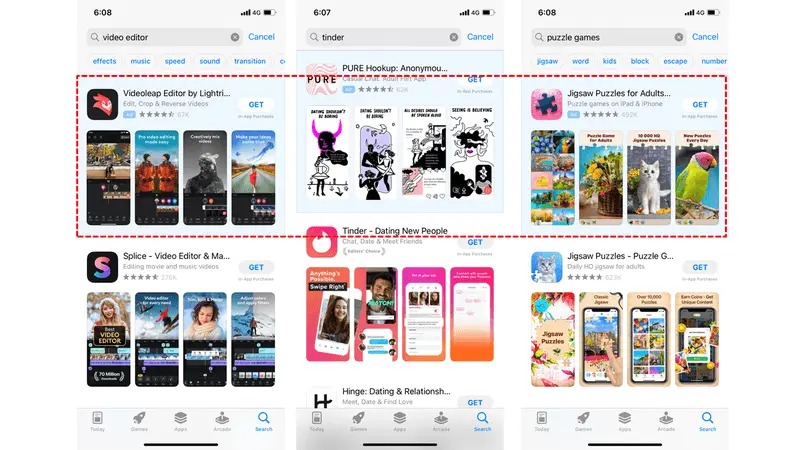Psychological Effects Commonly Involved in Marketing Planning (Part 1)
In the previous article, we explored six common psychological effects in marketing strategies: the Flywheel Effect, Herd Effect, Redundancy Principle, Veblen Effect, Birdcage Effect, and Free Psychology. These effects not only reveal the logic behind consumer behavior but also provide brands with effective marketing strategies. However, the world of marketing is far more complex than just these six psychological effects.
Today, we will delve deeper into additional psychological effects often involved in marketing strategies, helping brands better understand consumers and formulate more precise and effective marketing plans.
Marketing is not just about promoting products; it is an art of capturing hearts. In this process, understanding the subtleties of human nature becomes crucial.
Let us explore these psychological effects and examine how they subtly shape our shopping habits and brand loyalty.

01. The Compromise Effect – Choosing the “Safer” Option
The Compromise Effect refers to the tendency of consumers to choose the option that seems most “moderate” when faced with multiple choices. The middle option is perceived as less risky because it appears safer compared to the extremes:
It aligns more closely with social norms, avoiding impressions of extravagance or thriftiness.
Based on Herbert Simon’s Satisficing Principle, people often seek satisfactory solutions rather than optimal ones, and the middle option is typically seen as “good enough.”
This tendency becomes apparent when consumers face a range of options with significant differences, especially when extreme options make the middle one appear more reasonable and safe.
Example: Imagine visiting a Western restaurant for the first time, and the menu offers three set meals:
Set A: ¥98 (Main course + salad)
Set B: ¥188 (Main course + salad + soup + dessert)
Set C: ¥388 (Main course + salad + soup + dessert + a bottle of wine)
In this scenario, Set B is likely to become the most popular choice. It offers more than Set A but is less expensive than Set C, making it seem like the best value. Customers who are unsure of the best choice may feel that Set B strikes a balance between cost and content.
02. The Pandora Effect – Forbidden Desires
The Pandora Effect, inspired by the Greek myth of Pandora, describes a psychological phenomenon where restricted or forbidden things become more attractive due to curiosity or the allure of the forbidden.
In marketing, the Pandora Effect is used to stimulate consumer curiosity and desire by creating obstacles or restrictions to increase the appeal of a product or service.
Applications:
Exclusive Memberships: VIP services entice non-members to aspire to join.
Invitation-Only Campaigns: Secret marketing strategies grant select individuals early access to products, arousing external curiosity.
Hidden Menus: Restaurants offer “hidden” menu items to add an element of discovery and encourage word-of-mouth marketing.
These tactics leverage consumers’ desire to overcome restrictions, increasing their inclination to try or buy the offered products or services.
03. The Ripple Effect – Influence Radiates Outward
The Ripple Effect refers to the way influence spreads outward, much like ripples on water after a stone is thrown. In psychology, it describes how a central figure’s influence can extend to their surrounding network.
In marketing, the Ripple Effect is commonly used by leveraging the credibility and appeal of influential figures, such as Key Opinion Leaders (KOLs), celebrities, or industry experts, to enhance a brand’s appeal.
Examples:
Apple collaborated with Taylor Swift to promote Apple Music, boosting its visibility.
Perfect Diary, a beauty brand, partnered with multiple beauty bloggers to quickly raise brand awareness.
Nike featured NBA players in advertisements to strengthen its brand image.
Xiaomi engaged executives in fan meetups to enhance loyalty and brand identity.
04. The Rosenthal Effect – Belief Shapes Behavior
The Rosenthal Effect, also known as the Pygmalion Effect, highlights how positive expectations can increase confidence and motivate individuals to achieve better outcomes.
This effect, named after psychologist Robert Rosenthal, demonstrates how external expectations influence performance. In a famous experiment, randomly selected students were labeled as high-potential, and their teachers were informed of these predictions. A year later, these students performed significantly better, driven by their teachers’ higher expectations.
In marketing, the Rosenthal Effect is applied through encouragement and positive feedback to increase user engagement and loyalty.
Example: The fitness app Keep motivates users during workouts by providing feedback such as, “You’ve run 4 km in 40 minutes—keep it up!” Positive reinforcement like this boosts users’ commitment and builds a favorable impression of the app, fostering long-term reliance and loyalty.
05. The Peak-End Rule – Memorable Highs and Finishes
The Peak-End Rule suggests that people’s memories of an experience are shaped primarily by its most intense moments (positive or negative) and how it ends. Minor details are often forgotten in favor of these key points.
Marketers can apply this rule by designing high-impact moments and pleasant conclusions to enhance overall satisfaction.
Example:
IKEA: Despite the tiring search for items, IKEA sets up a positive ending by offering ¥1 ice cream at checkout, leaving customers with a pleasant impression of their shopping experience.
Exciting Features: IKEA’s sample rooms and creative layouts provide enjoyable “peak” moments, maintaining customer excitement and interest throughout the visit.
06. The Halo Effect – Highlighting Strengths to Boost Image
The Halo Effect occurs when a positive impression of one aspect of something influences perceptions of its entire entity. A single outstanding feature can elevate a product or brand’s overall image.
Applications:
Apple: Its sleek design and exceptional user experience create a positive impression that extends to other aspects, like hardware performance and software ecosystem, strengthening Apple’s overall brand image.
Conclusion
Marketing is not merely about selling products; it is about understanding the intricate nuances of human nature.
By flexibly applying these psychological effects, marketers can better understand consumer behavior, create precise and effective strategies, and enhance product and service competitiveness. These tactics enable brands to capture consumer attention, build emotional connections, and achieve growth in both sales and brand reputation in today’s competitive market.







